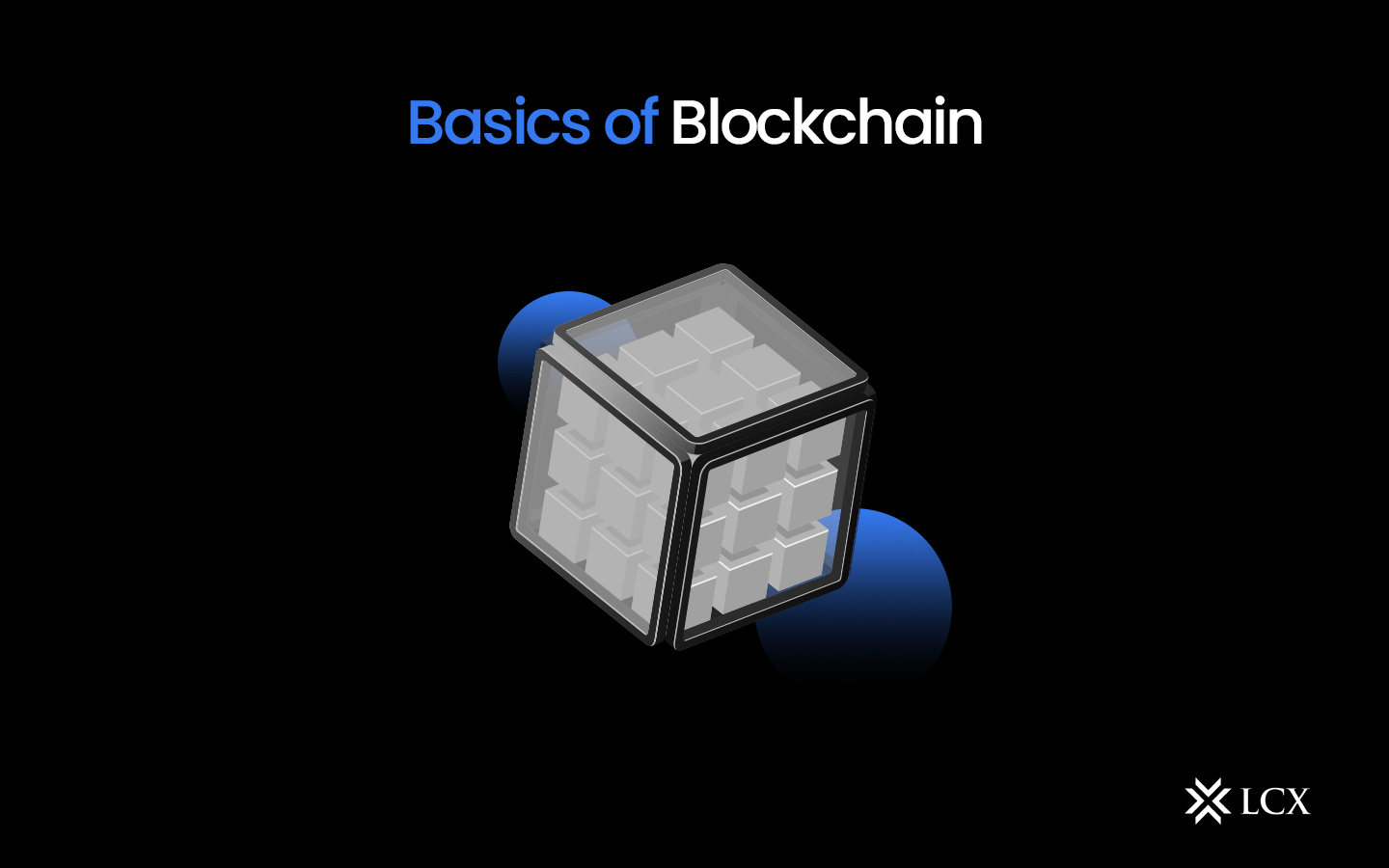In the world of technology, few innovations have garnered as much attention and promise as blockchain technology. Originally conceived as the underlying technology for cryptocurrencies like Bitcoin, blockchain has transcended its origins and found applications in various industries, from finance to healthcare and beyond. In this comprehensive guide, we will delve into the fundamentals of blockchain technology, breaking down its core components.
What Is Blockchain Technology?
Blockchain is a method of recording data that makes it difficult or impossible to alter, infiltrate, or manipulate the system. A blockchain is a distributed ledger that duplicates and distributes transactions throughout the network of computers that comprise the blockchain.
Blockchain technology is a structure that holds public transactional records, also known as the block, in several databases, also known as the “chain,” in a network of peer-to-peer nodes. This storage is typically referred to as a ‘digital ledger.’
Every transaction in this ledger is authorized by the owner’s digital signature, which authenticates the transaction and protects it from modification. Consequently, the information contained in the digital ledger is highly secure.
In simplified terms, the digital ledger is analogous to a networked Google spreadsheet in which the transactional records are stored according to actual purchases. The intriguing aspect is that anyone can view the data, but cannot alter it.
Why Is Blockchain Popular?
Suppose you are transferring funds from your bank account to family or acquaintances. You would log in to your online banking account and transfer the funds using the recipient’s account number. Your bank amends the transaction records once the transaction is complete. It seems straightforward, correct? There is a potential problem that the majority of us overlook.
These forms of transactions are highly susceptible to manipulation. People who are aware of this fact are typically hesitant to engage in these types of transactions; thus, the emergence of third-party payment applications in recent years. However, this vulnerability is the primary reason Blockchain technology was developed.
Blockchain is a digital ledger that has recently gained a great deal of attention and traction from a technological standpoint. But why has it gained such popularity? Let’s delve deeper to comprehend the entire concept.
The documentation of data and transactions is essential to the operation of a business. Typically, this information is managed in-house or passed to a third party, such as brokers, bankers, or attorneys, which increases the time, cost, or both for the business. Fortunately, Blockchain eliminates this lengthy procedure and expedites the transaction, thereby saving both time and money.
In reality, Blockchain and Bitcoin cannot be used interchangeably, contrary to popular belief. Bitcoin is a currency that relies on Blockchain technology for security. Blockchain technology is capable of sustaining applications in multiple industries, such as finance, supply chain, manufacturing, etc., but Bitcoin is the only currency that relies on Blockchain technology.
Blockchain is an emerging technology with numerous benefits in a world that is becoming increasingly digital:
- Highly Secure
It uses a digital signature feature to conduct fraud-free transactions, making it impossible for other users to alter or corrupt an individual’s data without their own unique digital signature.
- Decentralized System
Conventionally, transactions require the sanction of regulatory authorities such as a government or bank; however, with Blockchain, transactions are conducted with the consensus of users, resulting in transactions that are more efficient, secure, and quick.
- Automation Capability
It is programmable and can generate systematic payments and events when the trigger occurs.
Structure and Design of Blockchain
At its essence, a blockchain is a distributed, immutable, and decentralized ledger consisting of a chain of blocks, each of which contains a set of data. Using cryptographic techniques, the pieces are connected to form a chronological chain of information. The data security of a blockchain is ensured by its consensus mechanism, which consists of a network of nodes that concur on the legitimacy of transactions before adding them to the blockchain.
A block in a blockchain consists of the following three-separate components:
Blocks:
- The header contains metadata such as the preceding block’s hash and a timestamp with a random number used in the mining process.
- The data section contains the primary and actual information recorded in the block, such as transactions and smart contracts.
- The hash is a unique cryptographic representation of the entire block used for verification purposes.
Block Time:
Block time refers to the amount of time required to generate a new block in a blockchain. Depending on the blockchain, block durations can range from seconds to minutes or even hours. Shorter block times can result in speedier transaction confirmations, but they also increase the likelihood of conflicts. Longer block times may lengthen the time required for transaction confirmations, but they reduce the likelihood of conflicts.
Hard Forks:
A hard fork in a blockchain is a permanent divergence in the history of the blockchain that results in two separate chains. It can occur when the protocol of a blockchain undergoes a fundamental change and not all nodes concur on the update. Hard branches can result in the creation of new cryptocurrencies or the division of existing ones, and their resolution requires consensus among network participants.
Decentralization:
Decentralization is the defining characteristic of blockchain technology. In a blockchain that is decentralized, there is no central authority that can control the network. In decentralization, decision-making authority is dispersed across a network of nodes that collectively validate and concur on the transactions to be added to the blockchain. This decentralized nature of blockchain technology promotes openness, confidence, and safety. Additionally, it reduces the risk of relying on a single point of failure and the risk of data manipulation.
Finality:
Finality refers to the irreversible confirmation of blockchain-based transactions. When a transaction is appended to a block and the block is confirmed by the network, the transaction becomes irreversible and cannot be undone. This feature ensures data integrity and prevents double expenditure, thereby providing a high level of security and confidence in Blockchain Types & Sustainability.
Openness:
The openness of blockchain technology makes it accessible to anyone wishing to join the network. This implies that anyone can join the network, validate transactions, and contribute new blocks to the blockchain, provided they understand the consensus rules. Openness fosters inclusiveness, transparency, and innovation because it enables the participation of diverse stakeholders.
This type of blockchain is accessible to the general public and allows anyone to join the network, conduct transactions, and participate in the consensus process. Public blockchains are transparent because every transaction is recorded publicly.
How Does Blockchain Technology Work?
Blockchain combines three innovative technologies:
Cryptographic keys
A peer-to-peer network with a distributed ledger
A computer system for storing the network’s transactions and records.
There are two types of cryptographic keys: private and public. These keys facilitate the effective completion of transactions between two parties. Each person possesses these two keys, which are used to generate a secure digital identity reference. The most essential aspect of Blockchain technology is its ability to ensure identity security. This identity is referred to as a ‘digital signature’ in the world of cryptocurrencies and is used to authorize and regulate transactions.
The digital signature is merged with the peer-to-peer network; a significant number of authorities use the digital signature, among other things, to reach consensus on transactions. When they approve a transaction, it is mathematically verified, resulting in a successful, secure exchange between the two network-connected parties. To conclude, Blockchain users utilize cryptographic keys to conduct various types of digital interactions over the peer-to-peer network.
Varieties of Blockchain
There are numerous varieties of blockchains. They are listed below:
Private Blockchain Networks
Private blockchains typically function well for private enterprises and organizations, as they operate on closed networks. Businesses can use private blockchains to tailor their access and authorization preferences, network parameters, and other crucial security settings. A private blockchain network is managed by a single entity.
Public Blockchain Networks
Bitcoin and other cryptocurrencies arose from public blockchains, which also contributed to the proliferation of distributed ledger technology (DLT). Public blockchains also assist in overcoming obstacles and problems such as security vulnerabilities and centralization. As opposed to being stored in a singular location, DLT distributes data across a peer-to-peer network. A consensus algorithm is used to verify the authenticity of information; proof of stake (PoS) and proof of work (PoW) are two popular consensus methods.
Permissioned Blockchain Networks
Permissioned blockchain networks, also known as hybrid blockchains, are private blockchains that provide authorized users with privileged access. Typically, organizations create these types of blockchains to get the best of both worlds, as they enable greater structure when assigning network participants and transaction types.
Consortium Blockchains
Consortium blockchains have both public and private components, similar to permissioned blockchains, except that multiple organizations will manage a singular consortium blockchain network. Although these types of blockchains can initially be more complex to set up, once they are running, they can offer greater security. Moreover, consortium blockchains are optimal for multi-organizational collaboration.
Hybrid Blockchains
Public and private blockchains are combined to form hybrid blockchains. Some portions of a hybrid blockchain are public and transparent, while other portions are private and accessible only to authorized participants. This makes hybrid blockchains suitable for situations where a balance between transparency and privacy is required. In supply chain management, for instance, multiple parties can access specific information, but sensitive data can be kept confidential.
Sidechains
Sidechains are separate blockchains that operate concurrently with the primary blockchain, enabling additional functionality and scalability. Sidechains allow developers to experiment with new features and applications without compromising the integrity of the primary blockchain. Sidechains can be used, for instance, to create decentralized applications and employ particular consensus mechanisms. Sidechains can also be used to process the transactions on the main blockchain to alleviate congestion and improve scalability.
The concept of blockchain layers refers to the practice of stacking multiple blockchains. Each layer can have its own consensus mechanism, norms, and capabilities that can interact with other layers. Consequently, scalability is increased, as transactions can be processed in parallel across multiple layers. For instance, the Lightning Network, which is built atop the Bitcoin blockchain, is a second-layer solution that enables quicker and less expensive transactions by establishing payment channels between users.
Use Cases and Applications
Blockchain technology’s potential extends far beyond cryptocurrencies. Its unique features make it suitable for a wide range of applications:
Cryptocurrencies: As the original use case, cryptocurrencies like Bitcoin and Ethereum continue to thrive on blockchain technology.
Supply Chain Management: Blockchain enables transparent and traceable supply chains, reducing fraud and ensuring the authenticity of products.
Smart Contracts: These self-executing contracts automate and enforce agreements without the need for intermediaries, streamlining processes in various industries.
Healthcare: Blockchain can securely store and share patient data, ensuring privacy and data integrity.
Voting Systems: It has the potential to create secure and transparent voting systems, reducing electoral fraud.
Real Estate: Property transactions can be made more efficient and secure through blockchain, reducing the need for intermediaries like title companies.
Intellectual Property: Blockchain can help artists and creators protect their intellectual property rights through transparent ownership records.
Conclusion
Blockchain technology is a transformative innovation with the potential to revolutionize the way we conduct transactions, manage data, and interact with digital systems. Its decentralized and secure nature opens up a world of possibilities across various industries. While challenges persist, ongoing research and development are pushing the boundaries of what blockchain can achieve. Understanding the basics of blockchain is not just a matter of curiosity; it’s an essential step in preparing for the digital future that this revolutionary technology promises to usher in.










